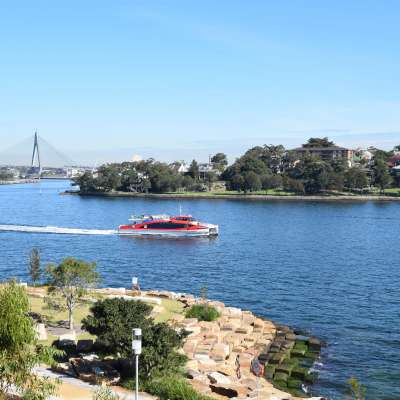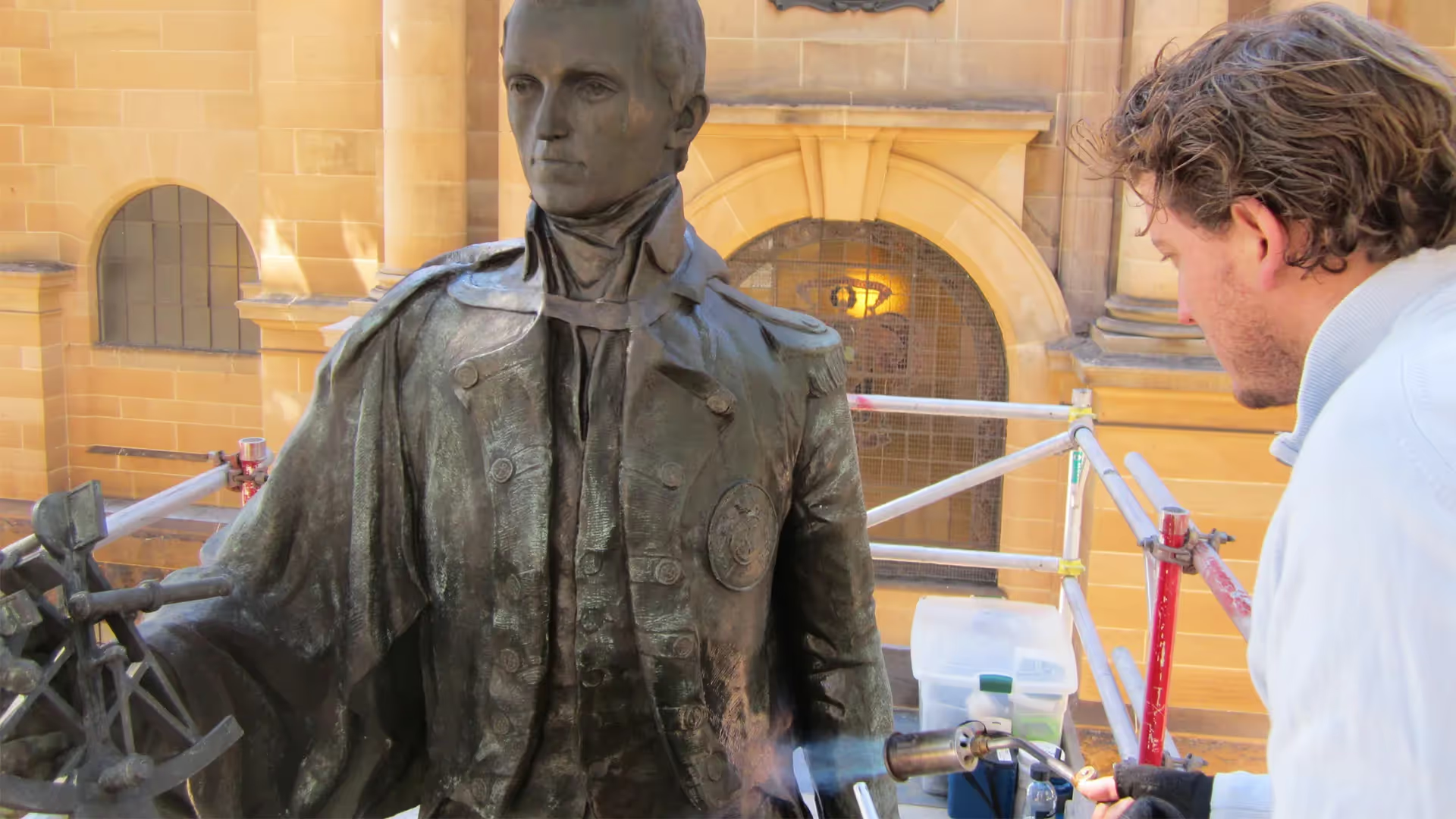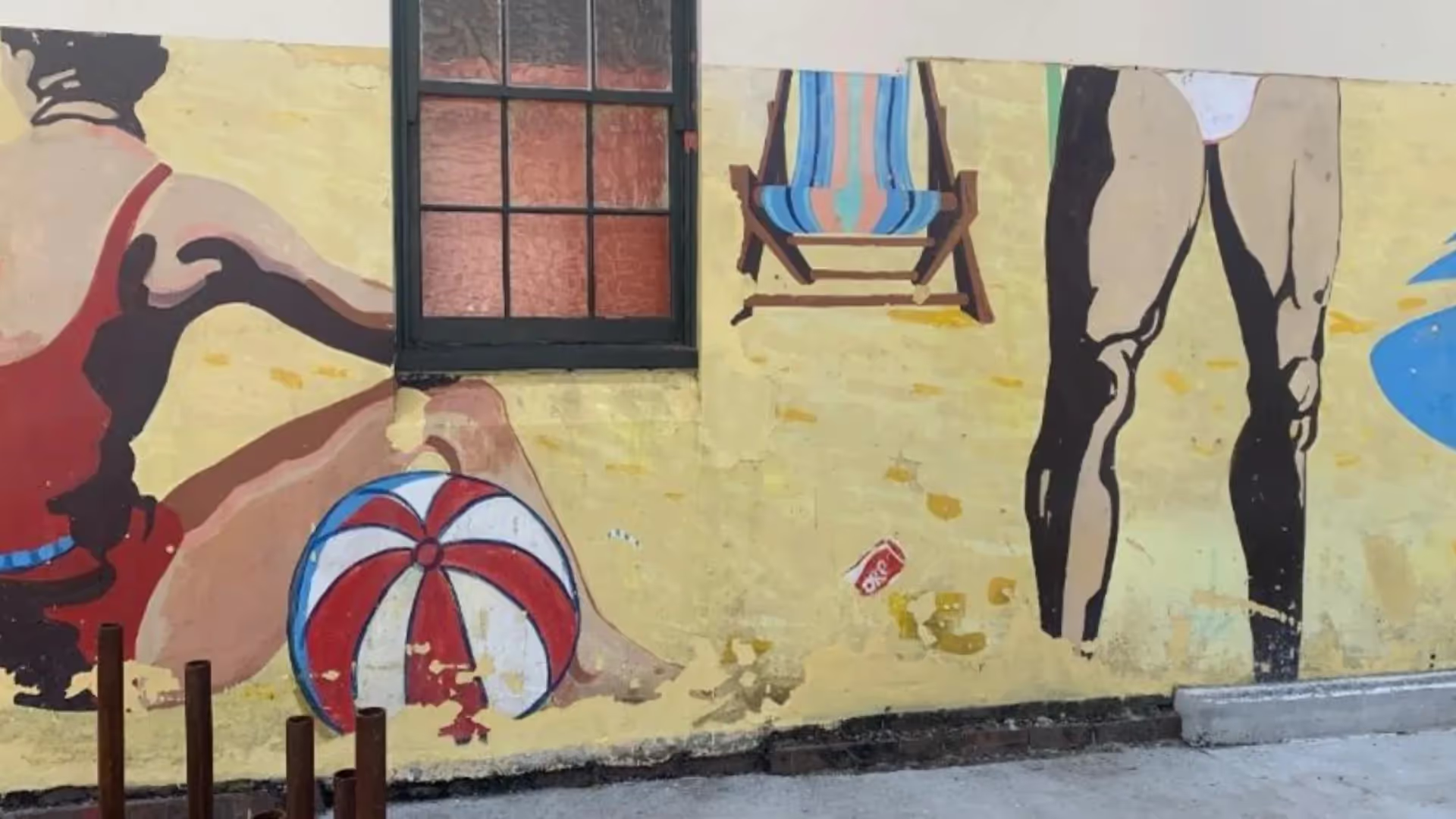Condition
ICS was commissioned to undertake a condition assessment of the archaeological remains of Munn’s Slipway and to advise on options for conservation of the remains. The outcome of this assessment identified that whilst the remains would be best preserved by reburial, exposure of some or all of the remains would be a viable conservation outcome, particularly given the potential for interpretation, and the way the remains confirmed the accuracy of the location for the newly constructed shoreline.
Treatment
Construction
Initially the remains of Munn’s Slipway were reburied to protect them during bulk earthworks required to excavate Nawi Cove and construct the headland. During this phase, ICS was involved in a design exercise to determine how best to conserve the remains. Multiple iterations of the complex geometry for the shoreline stonework ultimately identified that the optimum solution required omitting two portions of the new sandstone shoreline in a ‘cut-out’, thus revealing the slipway remains. ICS provided detailed documentation and design for the conservation of the sandstone blocks forming the remains of Munn’s Slipway, including selection and approval of materials for bedding and jointing of the small number of blocks which required reinstatement after construction of the new shoreline stonework.
ICS was present on site during the excavation of the surrounds to Munn’s Slipway, including installation of bored piles and a reinforced concrete ring beam to contain the remains and support the surrounding shoreline stonework. Watching the skill of the excavator operators working with buckets beneath the surface of the muddy water highlighted the commitment of the entire team to care and conserve this valuable evidence of the site’s history.
Treatment
- Condition assessment immediately following archaeological excavation
- Options for conservation of in situ remains
- Detailed design for exposure of in situ remains
- Documentation of works, including schedule of works and construction methodology
- On-site supervision during excavation and construction of surrounding shoreline stonework
- Resolution of technical issues during conservation works to remains
- Recommendations for long term monitoring, maintenance and management
Project Team
Builder: Baulderstone/Lend Lease
Landscape Architect: Johnson Pilton Walker
Archaeologist: Austral Archaeology
Heritage Consultant: Judith Rintoul
During treatment
Before treatment
After treatment








.avif)

